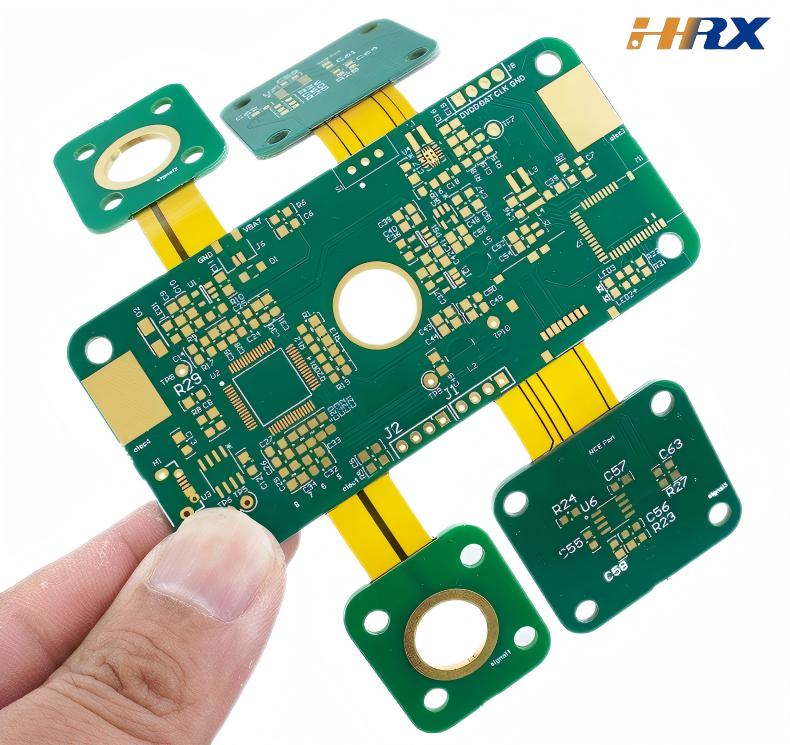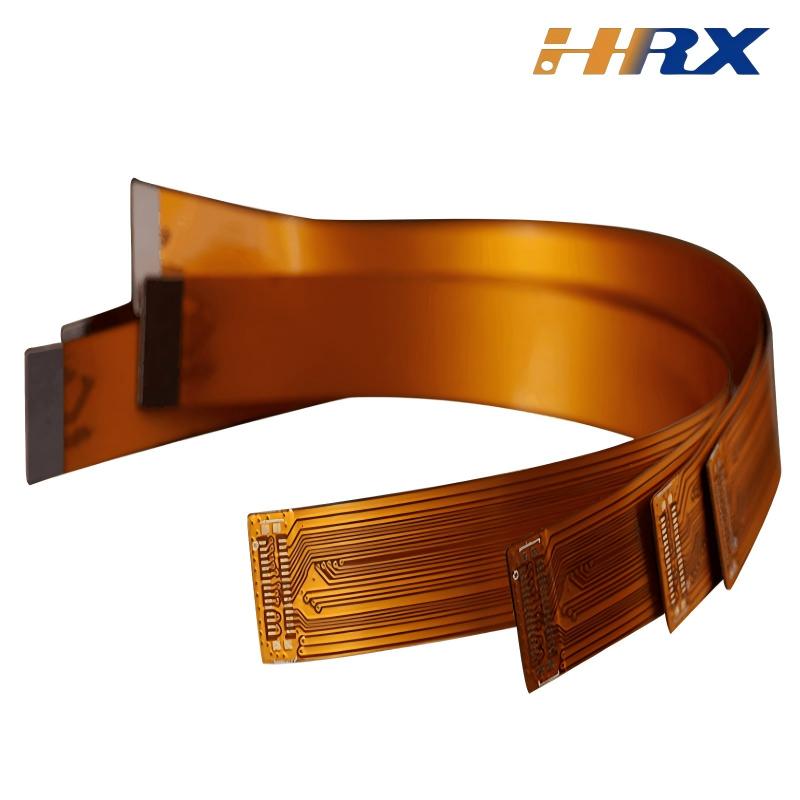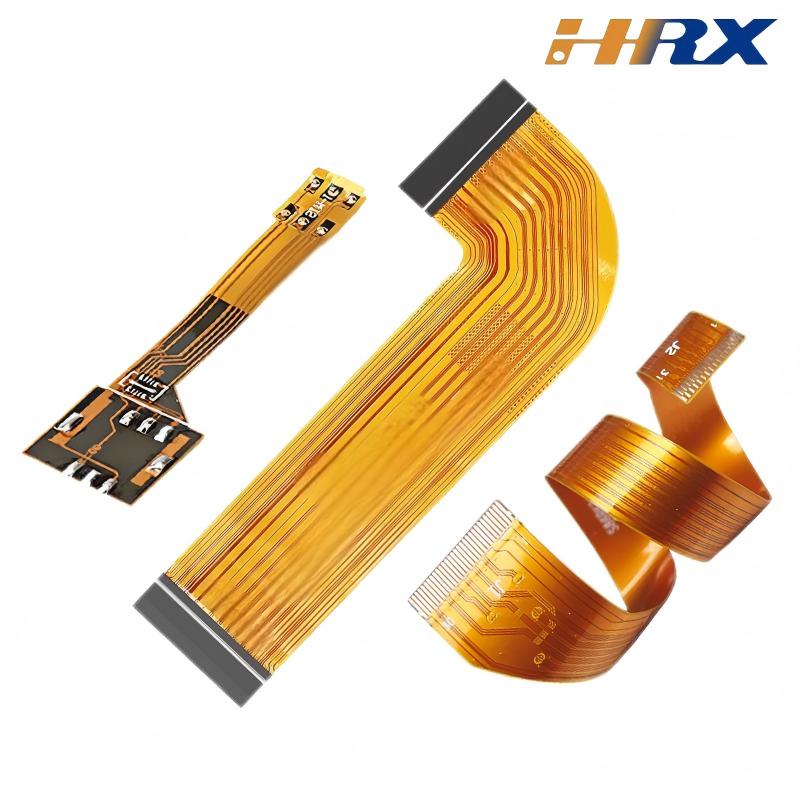Search
Failure Modes and Key Considerations of Rigid-Flex Printed Boards During Bending: A Deep Dive for Electronics Professionals
- Jun 11,2025
-
Share
In the rapidly evolving electronics manufacturing industry, Rigid-Flex Printed Boards (Rigid-Flex PCBs) have become indispensable for high-performance, space-constrained applications. As a leading global ODM/OEM manufacturer specializing in FPC (Flexible Printed Circuit), PCB, and Rigid-Flex Printed Boards, Shenzhen Huaruixin Electronics Co., Ltd. leverages its extensive expertise to address the complex challenges associated with these advanced circuit solutions. Understanding the potential failure modes during the bending process of Rigid-Flex PCBs, along with implementing crucial considerations, is paramount for ensuring product reliability and performance.

Potential Failure Modes During Bending
Delamination
Delamination is a prevalent failure mode in Rigid-Flex PCBs during bending operations, particularly at the interfaces between rigid and flex sections. The repeated mechanical stress can cause the separation of layers, including the adhesive layers that bond the different components. In FPCs, the Coverlay, a thin polyimide film with an adhesive backing, plays a critical role in protecting the copper traces. However, improper lamination or excessive bending can lead to delamination between the Coverlay and the copper traces, compromising the electrical integrity of the board. This issue is especially significant in applications like foldable smartphones, where the Rigid-Flex PCB undergoes frequent bending cycles. The delamination of layers can disrupt signal transmission, leading to system malfunctions and reducing the overall lifespan of the electronic device.
Trace Breakage
The traces on Rigid-Flex PCBs are vulnerable to breakage during bending due to the mechanical strain they endure. In FPC manufacturing, fine-pitch traces are commonly used to achieve high-density interconnections. These traces, often fabricated using advanced processes like Additive Manufacturing or Subtractive Manufacturing techniques, are more prone to damage under bending stress. In automotive electronics, where Rigid-Flex PCBs are used in complex systems such as ADAS (Advanced Driver-Assistance Systems), continuous vibrations combined with bending can cause micro-cracks in the traces over time. Once a trace breaks, it results in open circuits, disrupting the electrical signals and potentially causing critical system failures.
Pad Lift-off
Pad lift-off is another critical failure mode that occurs when the pads, which are essential for component attachment, detach from the PCB surface during bending. In FPCs, the use of Adhesive Backed Copper (ABC) and proper surface treatment are crucial for maintaining a strong bond between the pads and the substrate. However, excessive bending forces can weaken this bond, leading to pad lift-off. This is particularly concerning in aerospace and medical applications, where the reliability of electronic components is of utmost importance. A lifted pad can cause intermittent electrical connections, leading to unpredictable device behavior and posing risks to safety and functionality.
Flex Region Fracture
The flex regions of Rigid-Flex PCBs, typically composed of flexible materials like polyimide, are designed to withstand bending. However, improper bending practices, such as using a bending radius smaller than the recommended minimum, can lead to fractures in these regions. In wearable electronics, where the Rigid-Flex PCB needs to conform to the body's contours, repeated bending can cause fatigue in the flex material, eventually resulting in fractures. Once a fracture occurs, it can propagate rapidly, compromising the structural integrity of the entire board and causing electrical failures.
Key Considerations
Material Selection
Selecting the right materials is fundamental for the durability and reliability of Rigid-Flex PCBs. In FPC manufacturing, high-quality polyimide films with excellent flexibility and fatigue resistance are preferred for the flex layers. Additionally, the adhesive used for bonding different layers, such as the Dielectric Adhesive in Rigid-Flex PCBs, should have high peel strength and thermal stability. At Shenzhen Huaruixin Electronics Co., Ltd., we source materials from trusted global suppliers and conduct rigorous material characterization tests, including Tg (Glass Transition Temperature) and CTE (Coefficient of Thermal Expansion) measurements, to ensure they meet the stringent requirements of various applications. By using advanced materials, we can enhance the bending performance and lifespan of our Rigid-Flex PCBs, providing our customers with reliable solutions.
Design Optimization
An optimized design is crucial for minimizing the risk of failure during bending. In FPC design, factors such as trace routing, bend radius specification, and component placement need to be carefully considered. Traces should be routed along the natural bending axes of the flex regions to reduce stress concentration. The minimum bend radius should be determined based on the material properties and the thickness of the FPC. Additionally, the use of Relief Holes and Ramped Traces can help alleviate stress at critical points. Our experienced design team at Shenzhen Huaruixin Electronics Co., Ltd. utilizes advanced CAD/CAM tools and industry-standard design practices to create Rigid-Flex PCB designs that are optimized for both functionality and mechanical durability. By conducting Finite Element Analysis (FEA) simulations during the design phase, we can predict and mitigate potential failure points, ensuring the reliability of our products.
Manufacturing Process Control
Precise control of the manufacturing process is essential for producing high-quality Rigid-Flex PCBs. In FPC manufacturing, processes such as Lamination, Plating, and Etching need to be carefully monitored and controlled. The lamination process, for example, requires precise control of temperature, pressure, and time to ensure proper bonding of the layers. The use of advanced manufacturing equipment, such as Vacuum Laminators and Automated Optical Inspection (AOI) systems, can significantly improve the quality and consistency of the production process. At our state-of-the-art manufacturing facilities, we adhere to strict quality control procedures and industry standards, such as IPC-A-610 and IPC-6012, to ensure that every Rigid-Flex PCB meets the highest quality requirements.
Testing and Validation
Thorough testing and validation are necessary to ensure the performance and reliability of Rigid-Flex PCBs under bending conditions. In FPC testing, a combination of mechanical, electrical, and environmental tests is conducted. Mechanical bending tests, such as Cyclic Bending Tests and Dynamic Flex Testing, are used to evaluate the fatigue life of the flex regions. Electrical tests, including Continuity Testing and Impedance Testing, are performed to ensure the integrity of the electrical connections. Environmental tests, such as Temperature Humidity Bias (THB) Testing and Thermal Cycling Testing, simulate real-world operating conditions. At Shenzhen Huaruixin Electronics Co., Ltd., we have a comprehensive testing laboratory equipped with advanced testing equipment to conduct these tests. By subjecting our Rigid-Flex PCBs to rigorous testing and validation procedures, we can ensure that they meet or exceed industry standards and customer expectations.
Conclusion
Rigid-Flex Printed Boards offer significant advantages in modern electronics, but addressing the potential failure modes during bending and implementing key considerations are essential for their successful implementation. By incorporating FPC-specific terminologies and optimizing the content with SEO keywords, we aim to provide valuable insights to electronics professionals while enhancing the visibility of our expertise in the industry. As a professional manufacturer with a large-scale manufacturing base and extensive experience in FPC, PCB, and Rigid-Flex Printed Board design and development, Shenzhen Huaruixin Electronics Co., Ltd. is committed to providing innovative solutions and high-quality products. If you have any project requirements or would like to learn more about our Rigid-Flex PCBs and other products, please feel free to contact us at any time. You can visit our website at www.hrxfpc.com for more information or email us at sales@hrxfpc.com to start a conversation. We look forward to collaborating with you and sharing our expertise in the field of electronics manufacturing.

Let’s talk! We’ll provide the perfect solution for you!
-
 Huaruixin Electronics mainly produces printed circuit boards as the core business, to provide customers with one-stop solutions for FPC/PCB production, components sourcing and Assembly.
Huaruixin Electronics mainly produces printed circuit boards as the core business, to provide customers with one-stop solutions for FPC/PCB production, components sourcing and Assembly. - WHAT WE DO — PCB Design Solutions — Flex PCB Production — Components Sourcing — FPC&PCB Assembly
- PRODUCTS — Single Sided Flexible Circuits — Double Sided Flexible Circuits — Multilayer Flexible Cirucits — Rigid-Flex Circuits — FPC Assembly — PCB Assembly
- CAPABILITY — FPC Capability — Rigid-Flex Capability — PCB Capability — Assembly Capability
- Copyright © 2024 Shenzhen Huaruixin Electronics Co., Ltd. All Rights Reserved.
- Design By BONTOP


